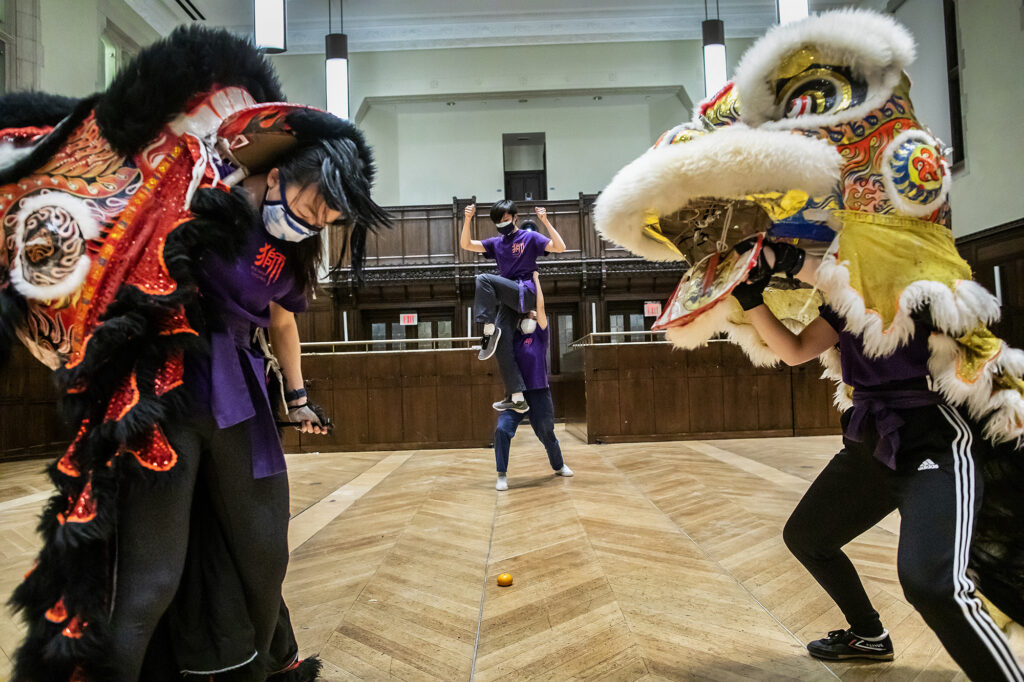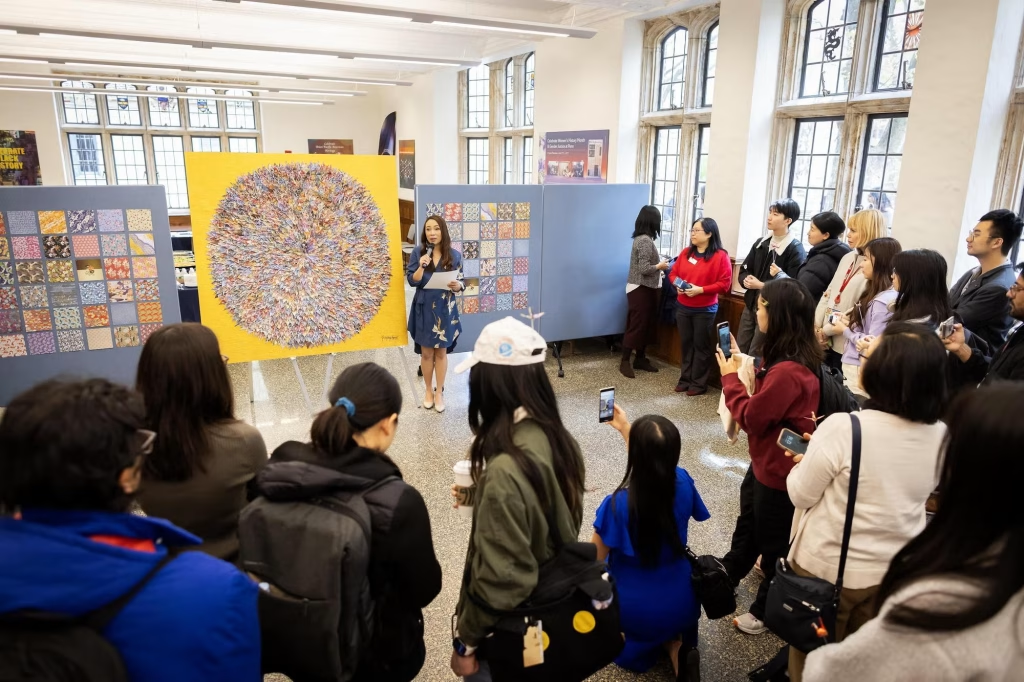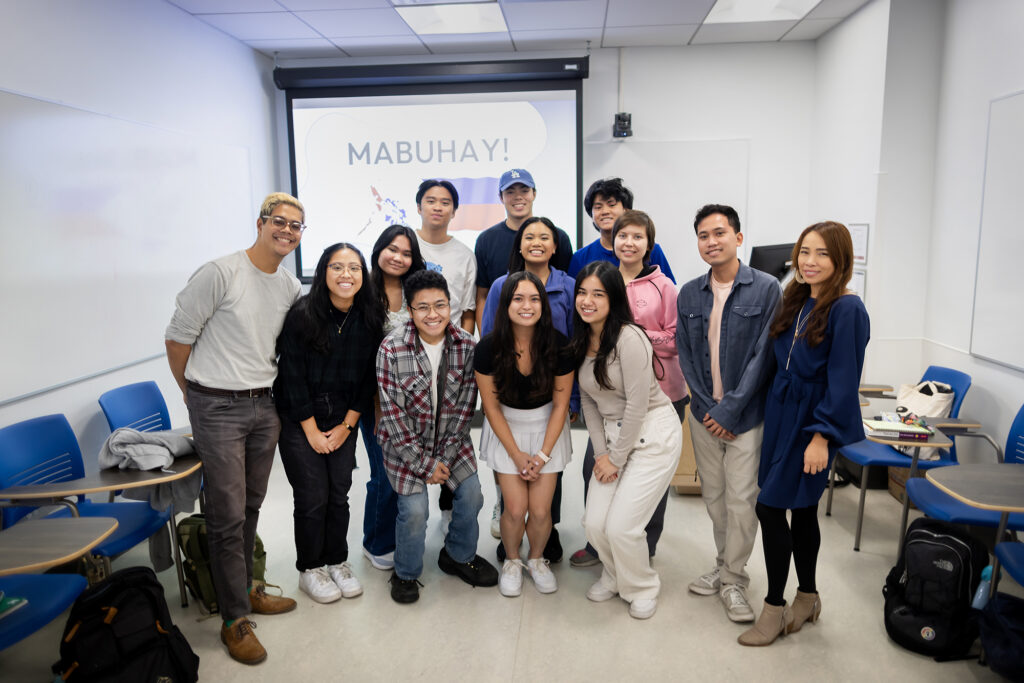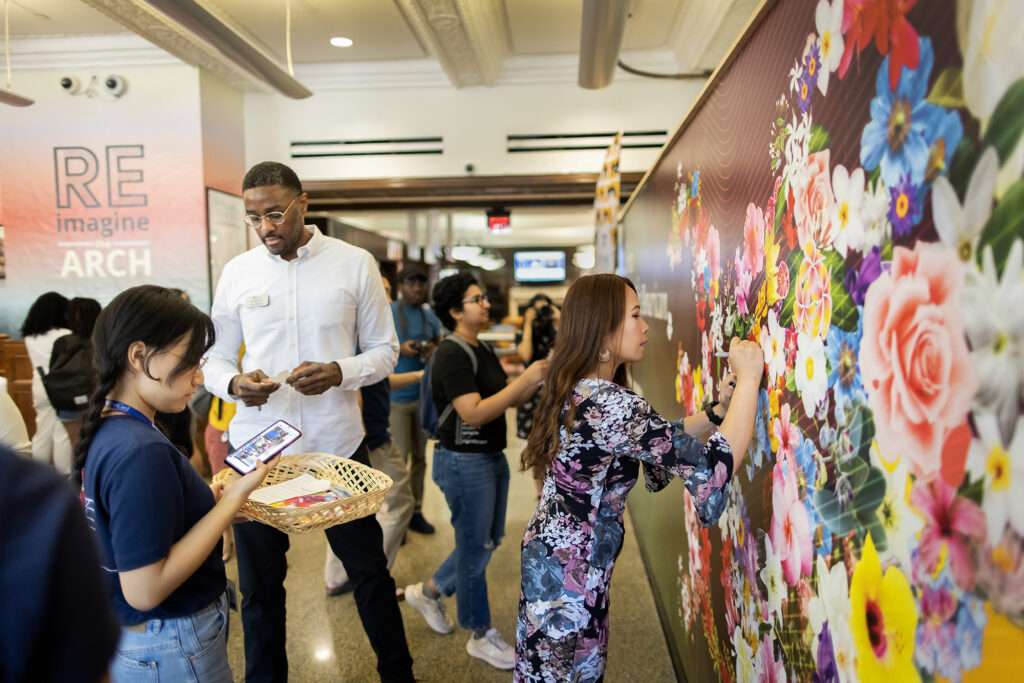Dripping rain falls through barren branches along Locust Walk late on a Thursday night. Students hurry past, unwilling to linger in the unhospitable February weather. But the ARCH building glows golden. Drumbeats reverberate through the structure. Four solemn thumps announce the interplay between two fighting lions engaged in a tug of war. The ornate animals, enhanced with vibrant red, bright gold, and ruffles of sparkling sequin fabric trimmed in faux fur, are tussling over a head of romaine, the lettuce symbolic of wealth. These are the Penn Lions, an undergraduate group that spreads good luck and blessings through the traditional Chinese lion dance, and they are practicing for the Lunar New Year, a reminder of rebirth and new beginnings to come after the cold rain.
The Lions, who have two practices per week during the academic year, are training for Feb. 8 performances in collaboration with Penn Dining, which is featuring a Lunar New Year menu with recipes from Fuchsia Dunlop, Andrea Nguyen, and David Chang.
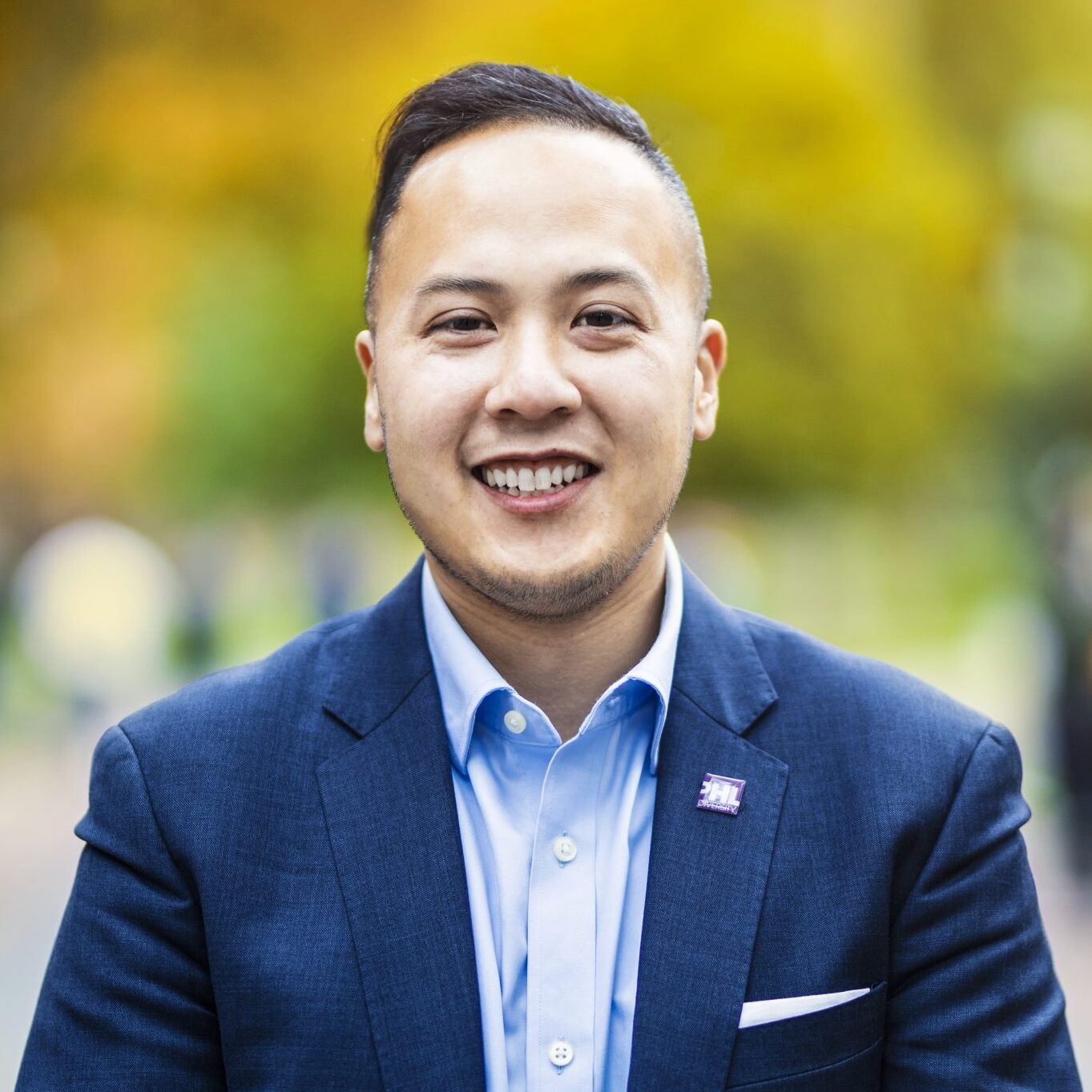
This year marks the year of the water tiger, says Van Do, as one of the elements—wood, water, metal, fire, and earth—are also associated with the zodiac animal. This year will draw upon the embodiment of both the element and the animal, which is associated with ambition, bravery, courage, and strength, he says.
The lion dance is believed to good luck throughout the community. “The lion dance wards off evil spirits and brings prosperity,” says Tiffany Lu, a junior from Hershey, Pennsylvania, studying fine arts in the College of Arts and Sciences.
Lu is one of the Penn Lions’ two dozen members. While she came into her freshman year as an experienced dancer in both Western and Eastern traditions, most learn lion dancing mainly through oral tradition, with upperclassmen teaching the newcomers. Only about one person per class has prior experience.
One of these was Zelan von Kaenel, a senior at Wharton specializing in finance and operations. Born to a Dutch father and Chinese and Costa Rican mother in Princeton, New Jersey, von Kaenel went to a Cantonese primary school, where the students were taught lion dancing basics. Reigniting this passion in college has been “one of my best decisions,” von Kaenel says. “The Lions has some of the friendliest and best community of people that I have met at Penn, and very diverse. If I wanted to know someone from a specific school, they are probably in Lions.”
Friendship bonds are consistently cited and praised within the Lions. “You come for the lion dancing; you stay for the community,” says Luke Bandeen, a senior from London. Far from a benign quality, this trust is essential as the two parts of the lion, the “tail” and “head,” work together as one. “The tail stabilizes the head while they do crane stands, wild kicks,” says Bandeen, who dances as a tail. He’s tall and robust—well over 6 feet—which comes in handy with the heavy lifting, called “stacking,” that is part of the tail’s role.
CELEBRATE THE YEAR OF THE TIGER
Penn Cooks—Lunar New Year: February 8th
The Penn Lions will put on 15-minute performances, starting at Hill House and progressing to Lauder College House, Kings Court English College House (KCEH), and 1920 Commons. KCEH will also feature guest speaker Hanh Nguyen, who teaches Vietnamese at the Penn Language Center.
Timeline:
5:30 p.m. —Hanh Nguyen will speak at KCEH
6 p.m. —Penn Lions at Hill House
6:30 p.m. —Penn Lions at Lauder
7 p.m. —Penn Lions at KCEH
7:30 p.m. —Penn Lions at 1920 Commons
-
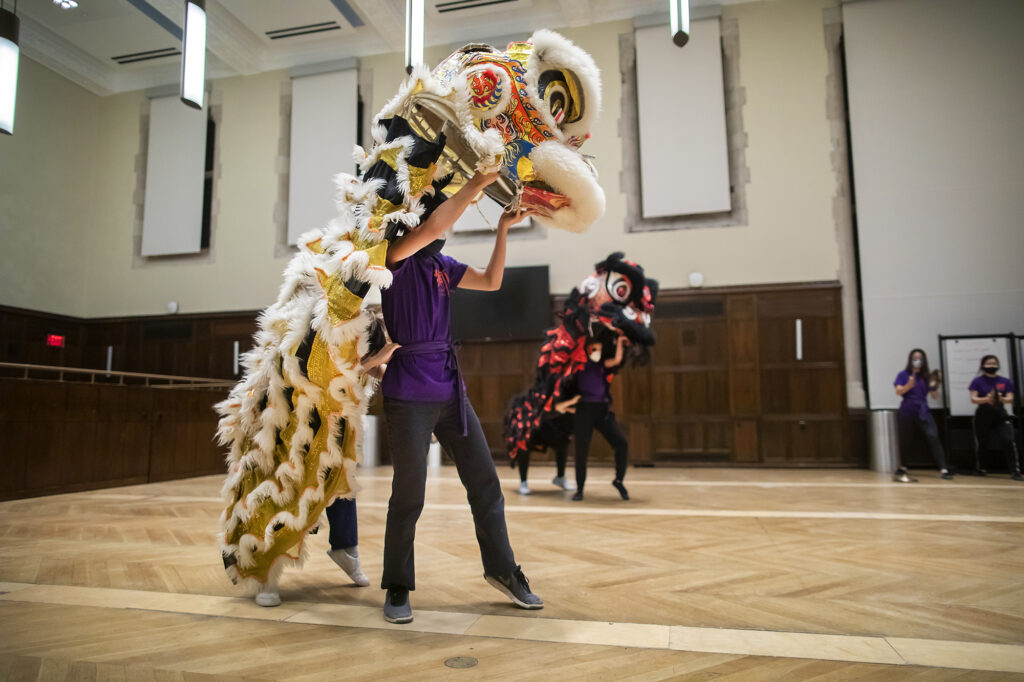
- The Penn Lions train for Lunar New Year. This year’s choreography features a tussle between two lions.
-
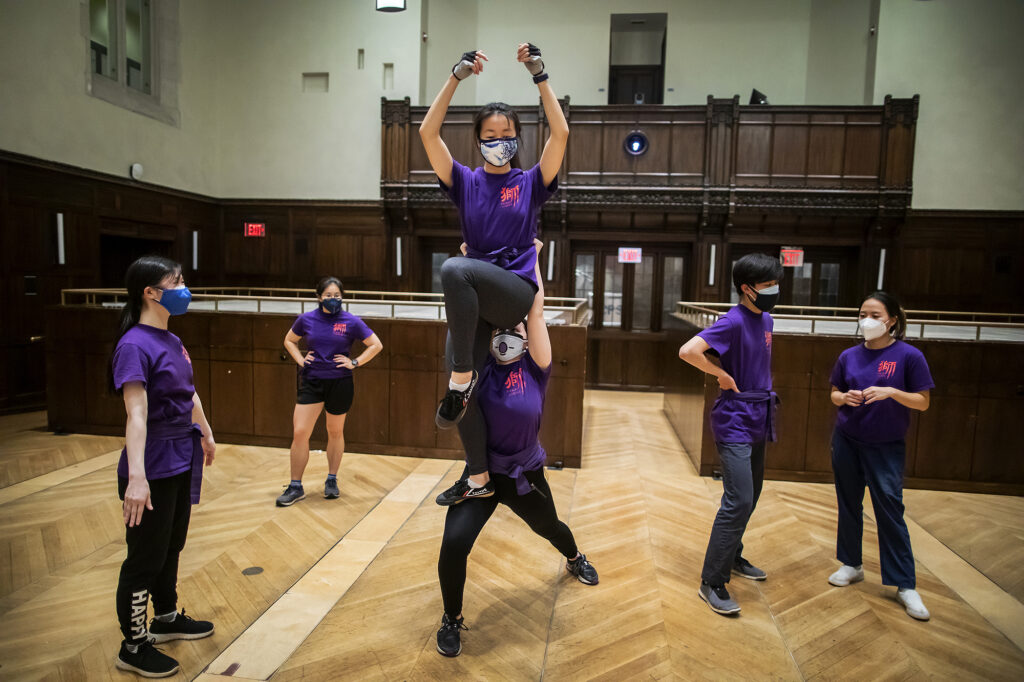
- The middle pair of dancers practices a “stack,” with one dancer perched on top of another’s head. Both strength and coordination are essential to execute this move.
-

- The group members sitting on the stage (and on Zoom) offer constructive criticism when the dance is over.
-

- The Penn Lions train for Lunar New Year. This year’s choreography features a tussle between two lions.

